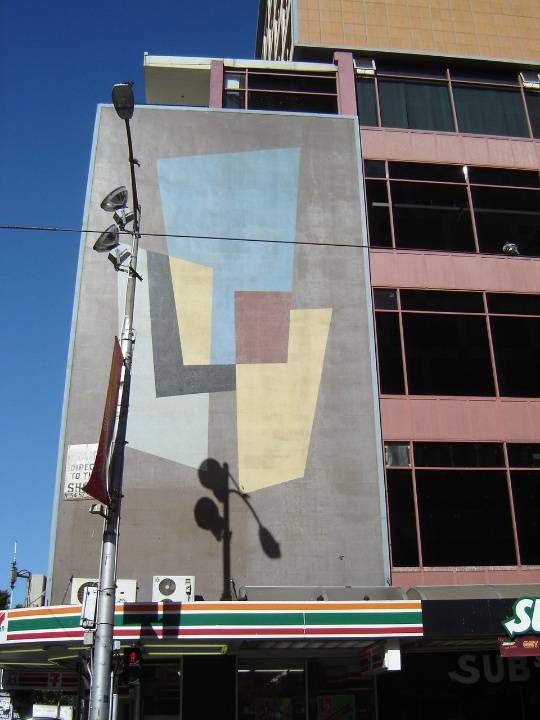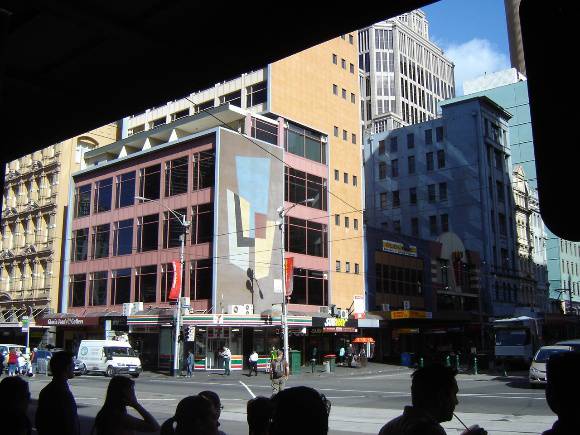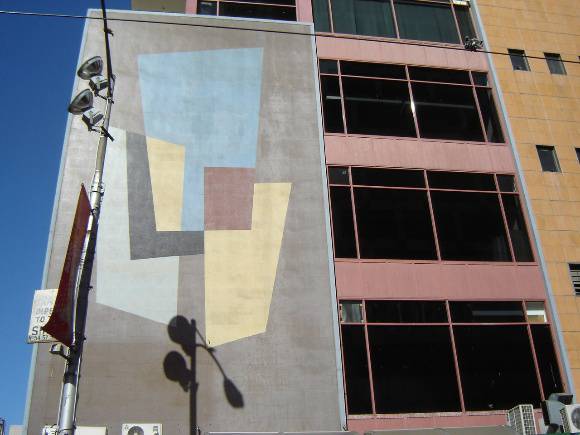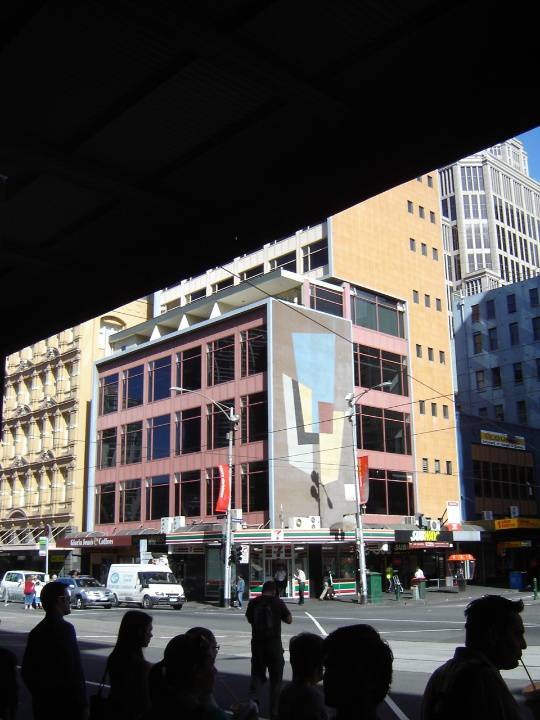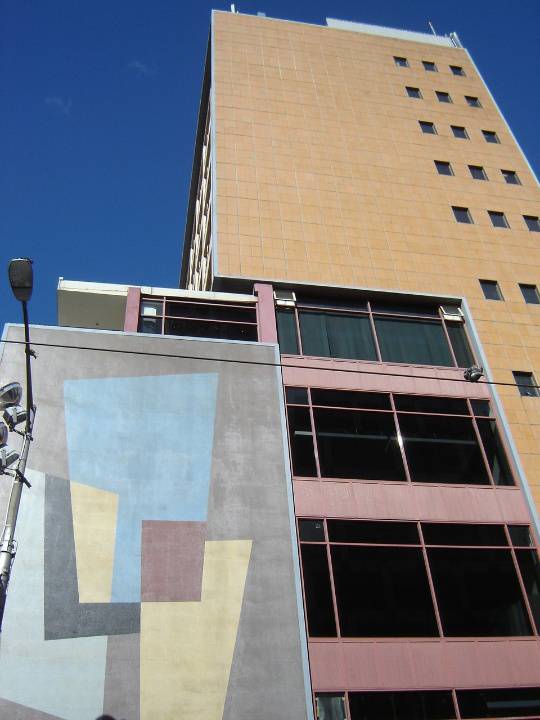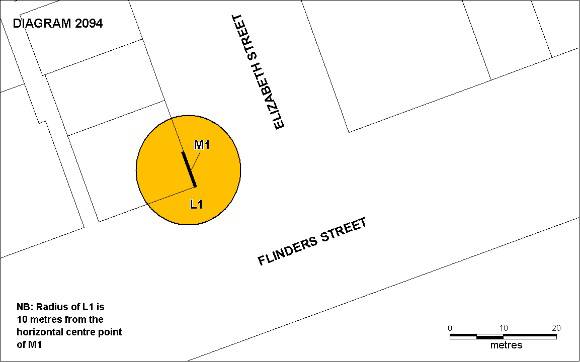| Back to search results » | Back to search page » |
|
HOSIES HOTEL MURAL
Other NameHOSIE'S HOTEL MURAL Location1-5 ELIZABETH STREET MELBOURNE, MELBOURNE CITY
File NumberPL-HE/03/0530LevelRegistered |
|
Statement of Significance
What is significant?
Hosie's Hotel Mural, at the corner of Elizabeth and Flinders Street, was created in 1955. Richard Beck (1912-1985), an English and German trained graphic designer and one of the leading modernist graphic designers in Melbourne at the time, was commissioned to create a mural for the new Hosie's Hotel.
There had been a Hotel at the corner of Elizabeth and Flinders Street, since the middle of the 19th Century and the well known Hotelier James Hosie, bought the premises in 1885. Hosie's Hotel was eventually sold to Carlton and United Breweries who in 1953 announced plans for a new air conditioned 13 floor hotel that would provide better accommodation facilities for the 1956 Olympic Games. Only one other hotel, the Graham Hotel in Swanston Street, was built to provide modern hotel accommodation for the Games. The Hosie's Hotel was completed in 1955 designed by Mussen, McKay and Potter in the Internationalist, modern style. The new Hotel had a glass fronted podium and a tower behind it. It retained an echo of the European Di Stijl style with its smooth finishes and the integration of art and architecture with the inclusion of Beck's mural as a major feature of the building. While the Graham Hotel still offers accommodation, Hosies's Hotel has been turned into offices and shops.
The architects always planned to incorporate a mural into the Elizabeth Street façade of the building. Beck's work is four storeys high and made of ceramic panels. The abstract image of 3 glasses (or pots) clinking together, was considered bold at the time and the colours, since faded, were bright and highly contrasted.
Richard Beck was well known nationally for his design work. Before coming to Australia in 1940, Beck had his own design consultancy in London working on London Transport Posters, Shell Mex Ltd and for the Orient Line. In Australia Beck worked as a commercial designer.He designed the only poster commissioned to officially promote and commemorate the 1956 Olympic Games in Melbourne. His most recognised work is his label for Coonawarra wines featuring a woodcut of the winery, which is still in use. He also designed stamps and was on the panel for the design of the Australian decimal currency. Richard Beck was a member of the design committee for the Olympic Street decorations and was represented in the Design Section of the Olympic Arts festival. His work is held by the National Gallery of Victoria, the Victoria and Albert Museum, the London Transport Museum and the London Design Museum.
How is it significant?
The Hosie's Hotel Mural is of historical significance to the state of Victoria.
Why is it significant?
The Hosie's Hotel Mural, designed by Richard Beck, is of historic importance for its connection to the modernist movement in architecture and design in Melbourne. This modernism was important as the city of Melbourne attempted to present itself to the world as a modern, contemporary city at the time of the 1956 Olympic Games. The re-building of Hosie's Hotel was an expression of a desire to provide modern hotel accommodation and the inclusion of the mural in the overall design of the building demonstrates the desire to appear modern.
The Hosie's Hotel Mural is of aesthetic significance as one of the few large scale abstract works on public display in Melbourne.
The Hosie's Hotel Mural is of importance for is association with Richard Beck an important Australian commercial graphic designer of the 1950s who worked on design projects for the 1956 Olympic Games in Melbourne.
Group
Public Art
Category
Mural




